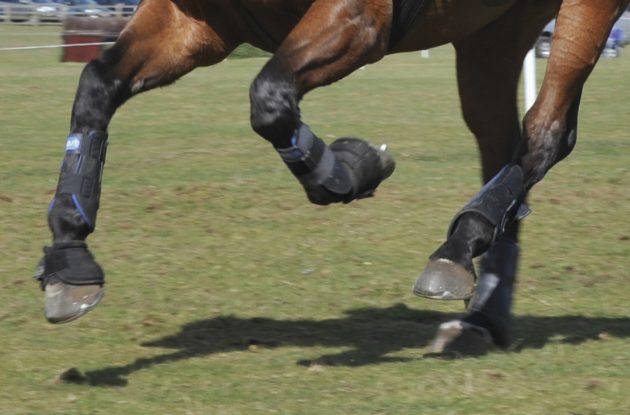There can be no more contentious issue in the veterinary world than thermocautery or, as it is more commonly known, firing.
In AD 500, in the first written report of the firing of horse’s legs, Publius Vegetius Renatus doubts the efficacy of the procedure, and some 1,500 years later the practice still divides veterinary opinion.
Advocates argue that the operation, which is said to stimulate tendon repair by counter irritation and consequently help the healing process, can only be of benefit to both the patient and the owner. In most cases both legs will be treated simultaneously, even when only one shows a clinical problem. Those who are against the practice point to the barbarism of the actual act.
First the leg is clipped, the horse is sedated and a local anaesthetic applied. Then the patient is subjected to a red-hot firing iron placed against the lower leg. The iron will either be used to burn lines around the leg (known as line or bar firing) or punched into the leg to actually penetrate the tendon itself (pin firing) pictured above. Freeze firing using liquid nitrogen is a further alternative, while the practice of acid firing— this is sulphuric acid dabbed against the leg using a cork — has almost disappeared.
Firing dates back to the middle ages, when post-operative care would have been non-existent. Today, post-operative care for fired horses can be excellent with painkillers and sedation used to control pain and discomfort. But those who disapprove of the practice point to the fact that no research has ever concluded that firing is effective.
Firing is only one part of the whole treatment. Legs will need to settle from an injury before the operation can be performed. The post-operative care will result in enforced box rest, followed by walking in-hand for several weeks, or indeed months. Then the patient be ready for the horse-walker and then the field, to complete the rehabilitation process.
There is no getting away from the fact that the whole healing process cannot be rushed and the patient will be out of action for a minimum of a year. Opponents of firing latch on to this fact. Time is the greatest healer and there are many prominent vets who are convinced it is time that has cured the injury and not the invasive act of firing.
Research verses real life examples
“Professor Silver’s research on the subject at Bristol University is the most in-depth attempt carried out to prove or disprove the efficacy of firing,” says Peter Webbon MRCVS, chief executive of the Animal Health Trust. “Silver induced tendon injuries in ponies and carried out a five-year study comparing those treated by firing and those allowed to recuperate through rest. His findings appear to suggest that the efficacy of firing is limited.”
Silver concluded that the firing of tendon injuries did not improve the rate at which the ponies regained pre-injury soundness. Based on the lack of beneficial evidence from firing the legs of horses suffering from tendonitis, the Bristol University team concluded that firing was neither justifiable nor useful.
However, as with all contentious practices, those who have experienced beneficial results will continue to support its use. One example is Trevor Heath, head lad to Banbury trainer Paul Webber, who has spent a lifetime in racing and recalls the legendary Fred Rimell being a great advocate of the practice.
“When I was with Fred, we had a vet called Les Harris who used to acid-fire horses with tendon injuries. We had numerous horses who came back better than ever after the operation and Gay Trip won the Grand National in 1970 and was second in 1972, having been fired,” he says. “John Webber’s good horses, such as Elfast and Land Afar, had their best years here at Cropredy Lawn after being fired.”
Alan Walker points to another Grand National winner who had his finest hour after being fired twice.
“Jenny Pitman asked me to fire Royal Athlete once — and then got me back down there to do it a second time to get the job done properly,” he remembers. “The horse was a great patient and never looked back.”
The practice was banned in the UK briefly by the Royal College of Veterinary Surgeons in the early 1990s. But advocates of firing were vociferous in its defence and after protracted discussion, the Royal College agreed that firing could be used “but only when other methods have failed”.




